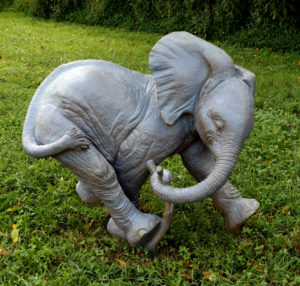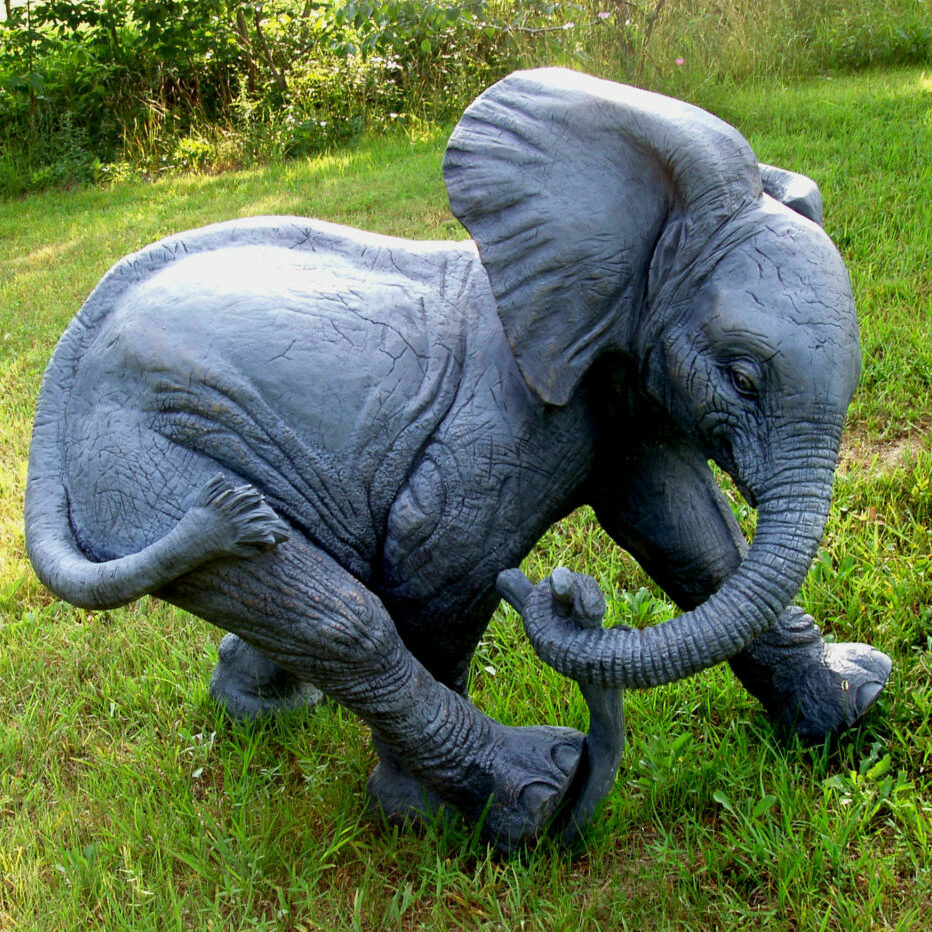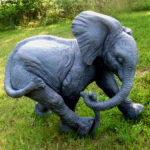Ely Playing with a Stick
Ely Playing with a Stick is a bronze replica of an original work in limestone depicting a disabled baby elephant. White was inspired after reading the book Echo of the Elephants, by Cynthia Moss.
Ely was an unusually large calf, and his front legs had been so restricted in the womb that he couldn’t straighten them, so he was born unable to walk and had to shuffle along on his knees. It was feared he would die, as he had trouble nursing, but thanks to the care of his mother, and his determined attempts to straighten his legs, he gained strength, eventually overcoming his disability, and is today a fully-grown bull elephant in Kenya’s Amboseli National Park.
In this piece Ely has his legs fully stretched out in play. The original artwork was carved in limestone using various power tools–large and small angle grinders,
a hammer drill and various burrs with a die grinder gave the final texture of the many wrinkles of an elephant’s skin.

By Meg White
Meg White hails from New Albany, Indiana and is a completely self taught sculptor who discovered the process through paper sculpture.
White is principally a stone carver who creates large to monumental works in Indiana Limestone. Her work is inspired by the written word whether work she feels compelled to create or work that is commissioned.
View all sculptures by this artist.Did You Know?
- Elephants under the age of three are still very dependent on their older relatives.
- Baby elephant’s bodies are covered in hair which reduces over time, as they age. These hairs aid in cooling down their bodies.
- A young elephant calf may suck its trunk to help it relax (just like humans suck their thumb).
- Most baby elephants are born at night.
- Young elephants often mimic their elders and this is how they learn to build their personality.
- Older elephants will come to the rescue if a young elephant cries out.
- You will often find young elephants sticking their trunks in the mouths of their older relatives, and other social bonding behavior.
Location


